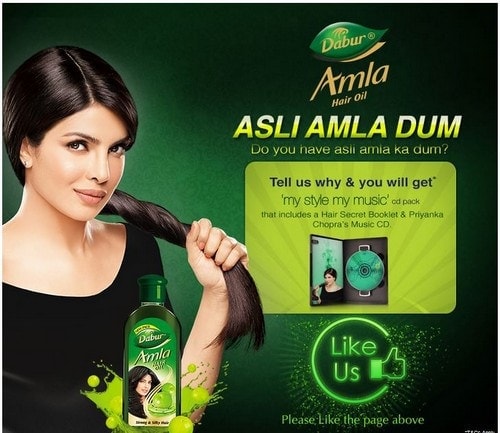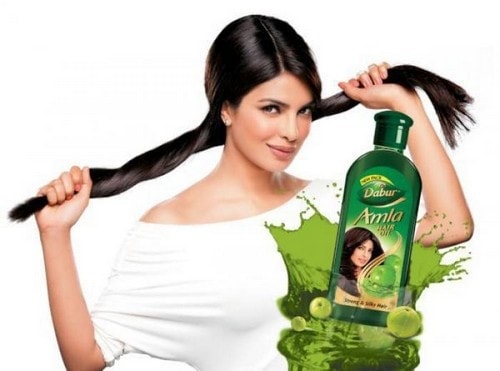Dabur Amla Hair Oil is a brand of hair oil from the Indian Pharmaceutical company Dabur which is enriched with natural ingredients like gooseberries, henna and hibiscus leaves. The hair oil which has a number of benefits has been derived from traditional Ayurvedic remedies for prevention of hair fall and reduction of premature greying.
Dabur was established in the year 1869 by DR S K Burman with the vision of using Ayurvedic recipes for common personal care problems. Dabur Amla Hair Oil was one of the first packaged oils in India and it went on to become one of the most popular brands in that segment and is the market leader even today.
Today Dabur has the presence in a number of foreign countries like Nigeria, Egypt, Nepal, Bangladesh, Sri Lanka and exports to the United Kingdom and the USA. The company registered an annual turnover of 77 billion INR in the year 2017.
Table of Contents
Strengths in the SWOT analysis of Dabur Amla
The following are the strengths of Dabur Amla Hair Oil:
- Customer insights: Dabur has always been conscious of understanding the hair care habits of customers as well as the issues that they face in products that they use currently. Dabur Amla Hair Oil has been conceived with the idea of removing issues that surfaced thus like increasing the strength of the hair or reducing hair fall.
- Usage of natural ingredients: Dabur has researched into natural ingredients that trigger faster hair growth, remove premature greying and create thicker hair growth and then developed Dabur Amla Hair oil with gooseberries as its key ingredient along with henna leaves, Tulasi and other herbs which trigger hair growth.
- Costing: Dabur Amla Hair Oil has always followed an aggressive costing policy. By sourcing its raw materials from sources close to the point of manufacture and growing most of the natural ingredients in-house in herbal gardens Dabur has been effective in cutting down the cost of raw materials.
- Technology-driven supply chain: One reason for the success of Dabur is the manner in which it has used technology to streamline its supply chain. The company has used technologies like ERP, RFID, and smart scanners at various levels of its supply chain to eliminate wastage and to ensure smooth flow of goods and services.
- Revamped positioning: Dabur made a recent attempt to reposition the Dabur Amla Hair Oil through a new set of ads featuring Priyanka Chopra. The oil which was earlier positioned in terms of its functional benefits has now been repositioned in terms of emotional benefits the prime advantage being the creation of a strong bond between mother and daughter after the message is done with the oil.
Weaknesses in the SWOT analysis of Dabur Amla
Some of the key weaknesses of Dabur Hair Oil are :
- Low penetration in foreign markets: The ingredients used in the Dabur Amla Hair Oil which is primarily gooseberry gives the oil a texture and smell which was not preferred by foreign customers. Thus the product has not been very popular in countries other than India.
- Too much diversification: Dabur which was once completely focused on ayurvedic and natural products started diversifying to an ayurvedic product, especially in the food business.This resulted in the company losing its focus on Dabur Amla Hair Oil which was one its hottest selling products.
- Poor presence in light oils: The recent years has seen an increase in the demand for light oils since it does not make the hair sticky or smell strong. Other competing brands have a number of offerings in this segment while Dabur Amla Hair Oil is thicker and stickier in its consistency. This might affect the overall sales of the product.
Opportunities in the SWOT analysis of Dabur Amla
Some of the opportunities include :
- New and untapped segments: In the hair care segment there are a lot of upcoming areas which are likely to offer a lot of prospects for business. These include coconut and olive oils, hair serums and hair strengthening creams and gels. There is also a lot of demand for ayurvedic daily use shampoos.
Threats in the SWOT analysis of Dabur Amla
Some of the threats include:
- Entry of multinationals: Companies like HUL and P & G which were earlier making chemical based hair oils and shampoos are now focusing more on products with natural or ayurvedic ingredients sensing a market there. Some of their offerings in this category like Ayush line of products, for example, are eating into the market share of Dabur Amla Hair Oil.
Liked this post? Check out the complete series on SWOT


this information is very useful for evry sales and marketer’s